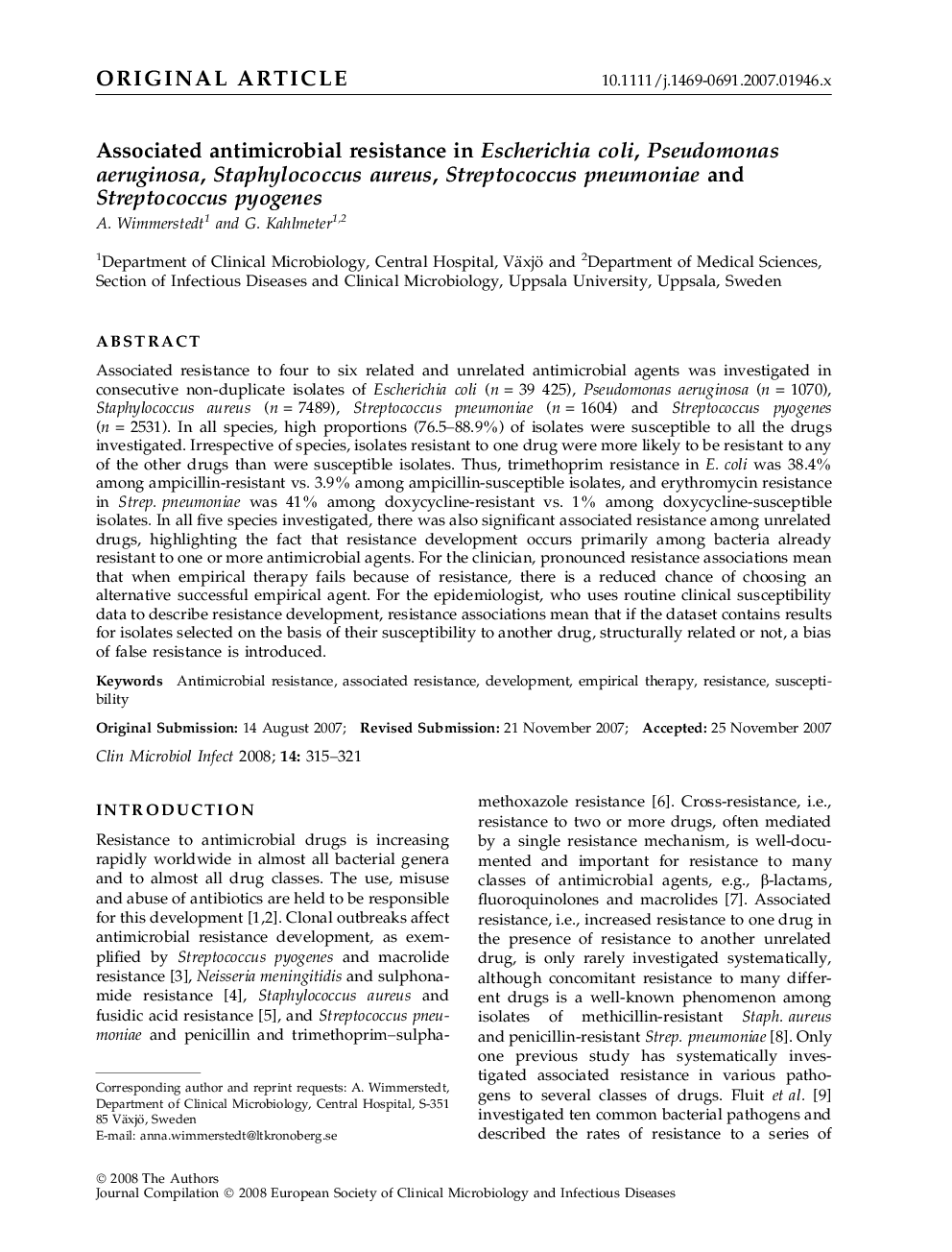| کد مقاله | کد نشریه | سال انتشار | مقاله انگلیسی | نسخه تمام متن |
|---|---|---|---|---|
| 3397900 | 1222254 | 2008 | 7 صفحه PDF | دانلود رایگان |

Associated resistance to four to six related and unrelated antimicrobial agents was investigated in consecutive non-duplicate isolates of Escherichia coli (n = 39 425), Pseudomonas aeruginosa (n = 1070), Staphylococcus aureus (n = 7489), Streptococcus pneumoniae (n = 1604) and Streptococcus pyogenes (n = 2531). In all species, high proportions (76.5–88.9%) of isolates were susceptible to all the drugs investigated. Irrespective of species, isolates resistant to one drug were more likely to be resistant to any of the other drugs than were susceptible isolates. Thus, trimethoprim resistance in E. coli was 38.4% among ampicillin-resistant vs. 3.9% among ampicillin-susceptible isolates, and erythromycin resistance in Strep. pneumoniae was 41% among doxycycline-resistant vs. 1% among doxycycline-susceptible isolates. In all five species investigated, there was also significant associated resistance among unrelated drugs, highlighting the fact that resistance development occurs primarily among bacteria already resistant to one or more antimicrobial agents. For the clinician, pronounced resistance associations mean that when empirical therapy fails because of resistance, there is a reduced chance of choosing an alternative successful empirical agent. For the epidemiologist, who uses routine clinical susceptibility data to describe resistance development, resistance associations mean that if the dataset contains results for isolates selected on the basis of their susceptibility to another drug, structurally related or not, a bias of false resistance is introduced.
Journal: Clinical Microbiology and Infection - Volume 14, Issue 4, April 2008, Pages 315–321